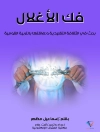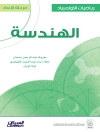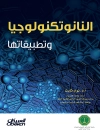This book illustrates the nature of Japan’s education system and identifies its strengths and weaknesses, as well as the socioeconomic environment surrounding education in contemporary Japanese society. It describes the basic institutional structure of each educational stage, in an overview of today’s school education in Japan, while also analyzing the current implementation status of important policies and the progress of reform at each stage. The book also examines the status of and problems with various issues that are considered essential to education in Japan today. These include teachers, lesson studies, school and community, educational disparities, education and jobs, multiculturalism, university reforms, internationalization of education and English-language education, education for sustainable development, and others, covering a diverse range of fields. The book is unique in its attempt to comprehensively understand and analyze the educational field in Japan by drawing on theexpertise of various academic disciplines.
表中的内容
1 Background and context of education system in Japan.- Part 1 The education system in Japan.- 2 Primary and Secondary Education.- 3 Higher education in Japan: Its uniqueness and historical development.- 4 Restructuring of social education and lifelong learning, and community governance.- 5 National and local educational administration.- Part 2 Educational issues in Japan.- 6 The relationship between teachers’ working conditions and teacher quality.- 7 Lesson study.- 8 Teacher narrative description.- 9 A history of schools and local communities in modern Japan.- 10 Background of ‘Individualised Meritocracy’ among Japanese youth: Social circulation model of post-war Japan and its collapse.- 11 Discussing the ‘Multicultural’ in Japanese society.- 12 Higher education reform: Focusing on national university reform.- 13 English language teaching and learning in Japan: History and prospect.- 14 Safety education from the perspective of Education for Sustainable Development (ESD).- Postscript:Toward education that truly enhances people’s wellbeing.
关于作者
Yuto Kitamura is an Associate Professor at the Graduate School of Education, University of Tokyo. He received his Ph.D. in Education from the University of California, Los Angeles (UCLA). He is also an Associate Member of the Science Council of Japan and a Member of the Board of Education, Tokyo Metropolitan Government. He is specialized in comparative education and has conducted extensive research on the education policies of developing countries, particularly in Southeast Asia. His recent publications include: Emerging International Dimensions of East Asian Higher Education (co-editor, Springer, 2014) and The Political Economy of Schooling in Cambodia (co-editor, Palgrave Macmillan, 2015).
Toshiyuki Omomo is a Professor at the Faculty of Intercultural Studies, Gakushuin Women’s College. He is also a Professor Emeritus at the University of Tokyo and at Tohoku University. Holding a Ph.D. in Education from Tohoku University, he is currently President of the Japan Educational Administration Society, and an Associate Member of the Science Council of Japan. He is specialized in educational administration, particularly educational reforms in Japan and the USA. His recent publications include: U.S. Education Reform at the Frontline: Race to the Top (co-editor, Tokyo: Gakujutu Shuppankai, 2012, in Japanese), and Education Reform at the Local Level (co-editor, Tokyo: Gakuji Shuppan, 2014, in Japanese).
Masaaki Katsuno is a Professor at the Graduate School of Education, University of Tokyo. He received his Ph.D. from the University of Waikato. He has been a member of the Joint ILO/UNESCO Committee of Experts on the Application of the Recommendations concerning Teaching Personnel since 2008. His research interest in changing teachers’ work and the ways national and local polices are being enacted at the school level is reflected in his latest book, entitled “Teacher evaluation policies and practices in Japan: The workings of performativity and micro-politics in Japanese schools” (Routledge 2016).












